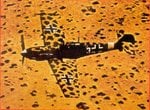KraziKanuK
Banned
- 792
- Jan 26, 2005
DJ_Dalton2 said:Very little of the above plane looks like a 109. The rudder and undercarriage. 1938 thats apparently the early squared wings. The oddest thing is the fuselage. its got a "bubble canopy".
The a/c had the fuselage reworked from frame 7 forward, naturally, since a radial had to be fitted. WN4 1776 was V17, the carrier trial a/c. The V15 WNr 1773 was the prototype E model. Notice the WNr series.
I guess we can take what you have to say about the 109 with a grain of salt since you seem to at a loss about the V21, WNr 1770, D-IFKQ. It later received the code KB+II. Another a/c received the BMW801. This was BF109X, WNr 5608, D-ITXP which was flown by Wendel on Sept 2 1939.



